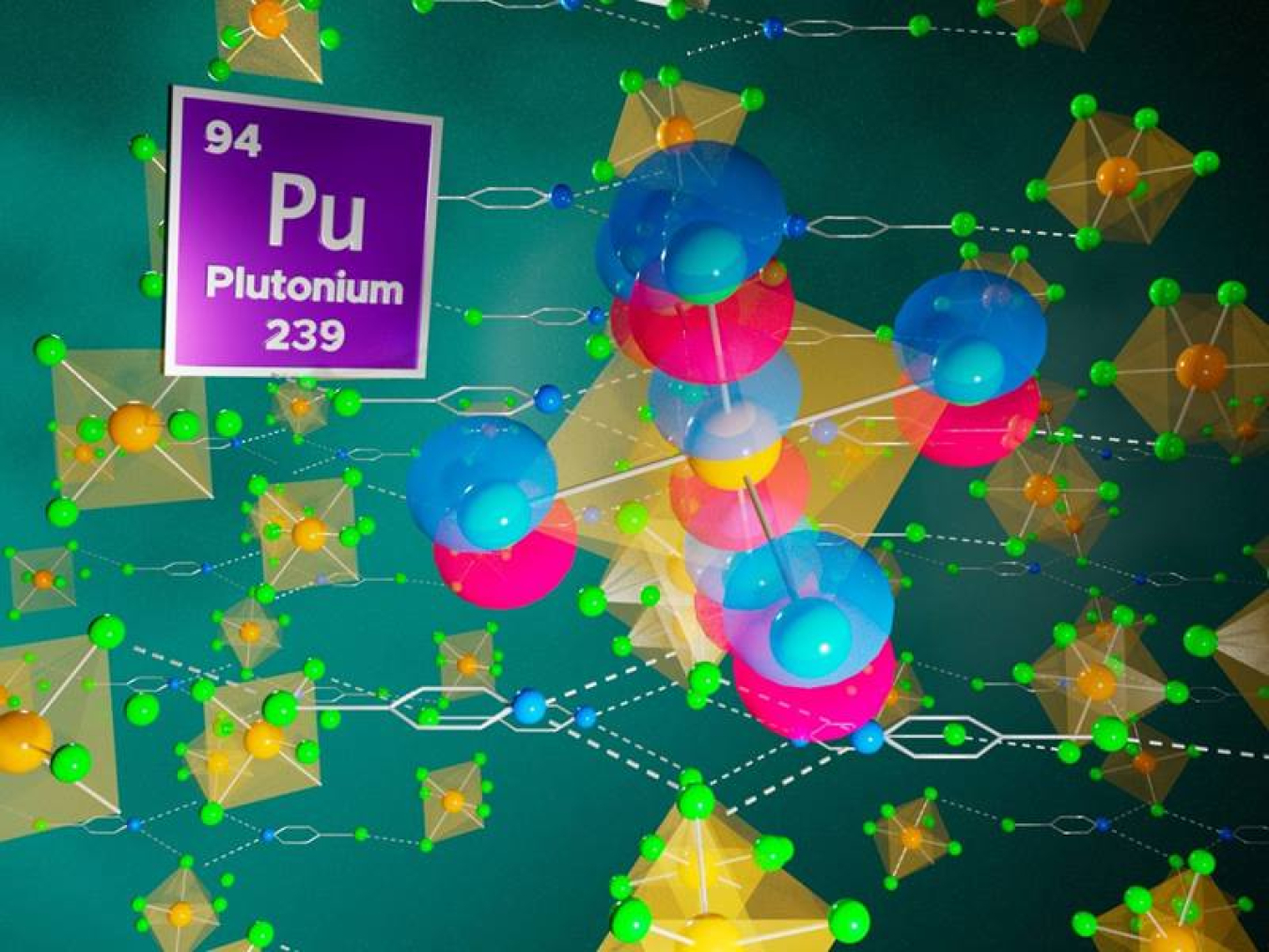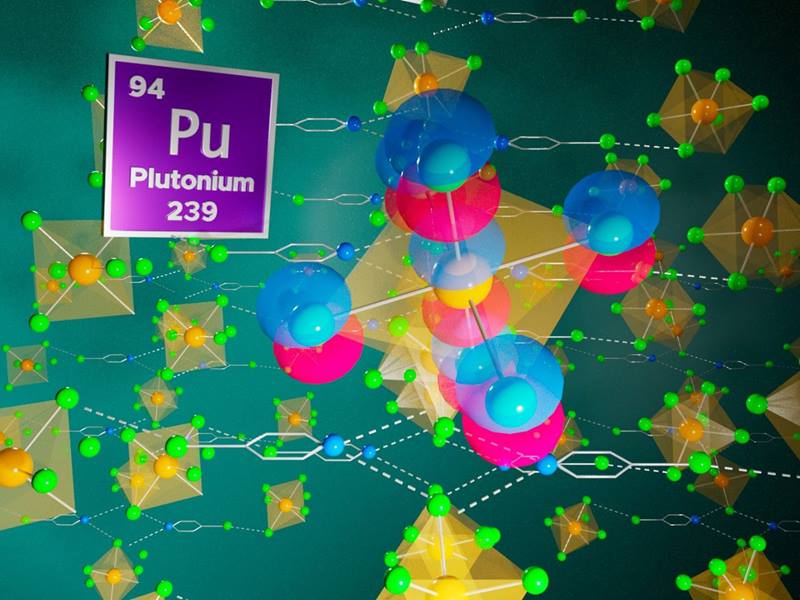
The Science
Understanding the arrangement of electrons in compounds containing actinide elements, such as uranium and plutonium, can help advance the design of next-generation nuclear materials. These elements are challenging to study due to their complex chemistry and radioactivity. Also, these elements, which are in a sequence of related elements called the actinide series, have electrons that are organized in ways that don’t match theoretical predictions. Researchers synthesized five different hybrid materials containing a particular compound subunit of plutonium and chlorine: the [PuCl6]2— anion. The researchers probed the anion’s electronic structure and found that while the electrons in the plutonium-chlorine bonds were mostly not shared (ionic), they also featured important contributions from covalent bonds where the electrons are shared. These covalent bonds correlated with the 5f shell of the quantum-mechanical model of the atom. This shell is also the region of mismatch between scientists’ observations and theories of how electrons are organized around atomic nuclei.
The Impact
The results of this study help scientists understand and predict the chemical and physical behavior of transuranic elements—elements beyond uranium in the periodic table. This is an important step toward advancing the design of next-generation nuclear materials. It could also help more effectively manage nuclear waste. By gaining new information on the role of the 5f shell in plutonium-chlorine bonds, this research contributes to the collective goal of resolving the f-electron challenge. Resolving this is the overarching goal of the Department of Energy Office of Science’s Heavy Element Chemistry program.
Summary
Researchers synthesized five different hybrid materials, (4XPyH)2[PuCl6], where X= H, Cl, Br, I, and (4IPyH)4[PuCl6]·2Cl, from an acidic, chloride-rich aqueous media. The team included researchers from Pacific Northwest National Laboratory (PNNL), George Washington University, the University of São Paulo, and the State University of New York at Buffalo. The researchers then probed the electronic structure of the [PuCl6]2— anion by using the quantum theory of atoms in molecules and natural localized molecular orbital analysis. The researchers delineated the underlying bond mechanism and hybrid atomic orbital contributions within the plutonium-ligand bonds. The researcher also evaluated two related compounds that they had reported in previous papers. The researchers subjected materials, containing the [PuO2Cl4]2−and [PuCl3(H2O)5] molecular units, to the same level of analysis to establish trends in bonding.
The results revealed the Pu-Cl bonds were predominantly ionic yet featured important covalent contributions that increased as bond polarity decreased from [PuCl3(H2O)5] < [PuO2Cl4]2− < [PuCl6]2−. Similarly, the Pu-based hybrid atomic orbitals in the Pu–Cl bonds exhibited decreased s and d orbital character, while the f orbital contribution increased. However, the Cl-based hybrid atomic orbitals did not vary significantly. This indicates that the 5f shell contributes to the covalent character of the Pu–Cl bond. This level of analysis provided valuable insight into the role of oxidation state, coordination geometry, and metal-ion charge in plutonium–ligand bond analysis.
Contact
Robert Gian Surbella III
Pacific Northwest National Laboratory
[email protected]
Christopher L. Cahill
Professor of International Affairs, The George Washington University
[email protected]
Funding
The primary source of support for this research is the Department of Energy Office of Science, Basic Energy Sciences program, Division of Chemical Sciences, Geosciences, and Biosciences, Heavy Element Chemistry program at PNNL and GWU. The researchers also acknowledge support from the National Technical Nuclear Forensic Center and the São Paulo Research Foundation (FAPESP). Computational resources were provided by the High-Performance Computing Cluster operated by Research Technology Services at George Washington University, the National Laboratory for Scientific Computing (LNCC/MCTI, Brazil, SDumont supercomputer), and the Center for Computational Research at the University at Buffalo.
Publications
Surbella, R.G. III, et al., Plutonium Hybrid Materials: A Platform to Explore Assembly and Metal–Ligand Bonding. Inorganic Chemistry 61, 45 (2022). [DOI: 10.1021/acs.inorgchem.2c02084]
Scraped from https://www.sourcearu.com




